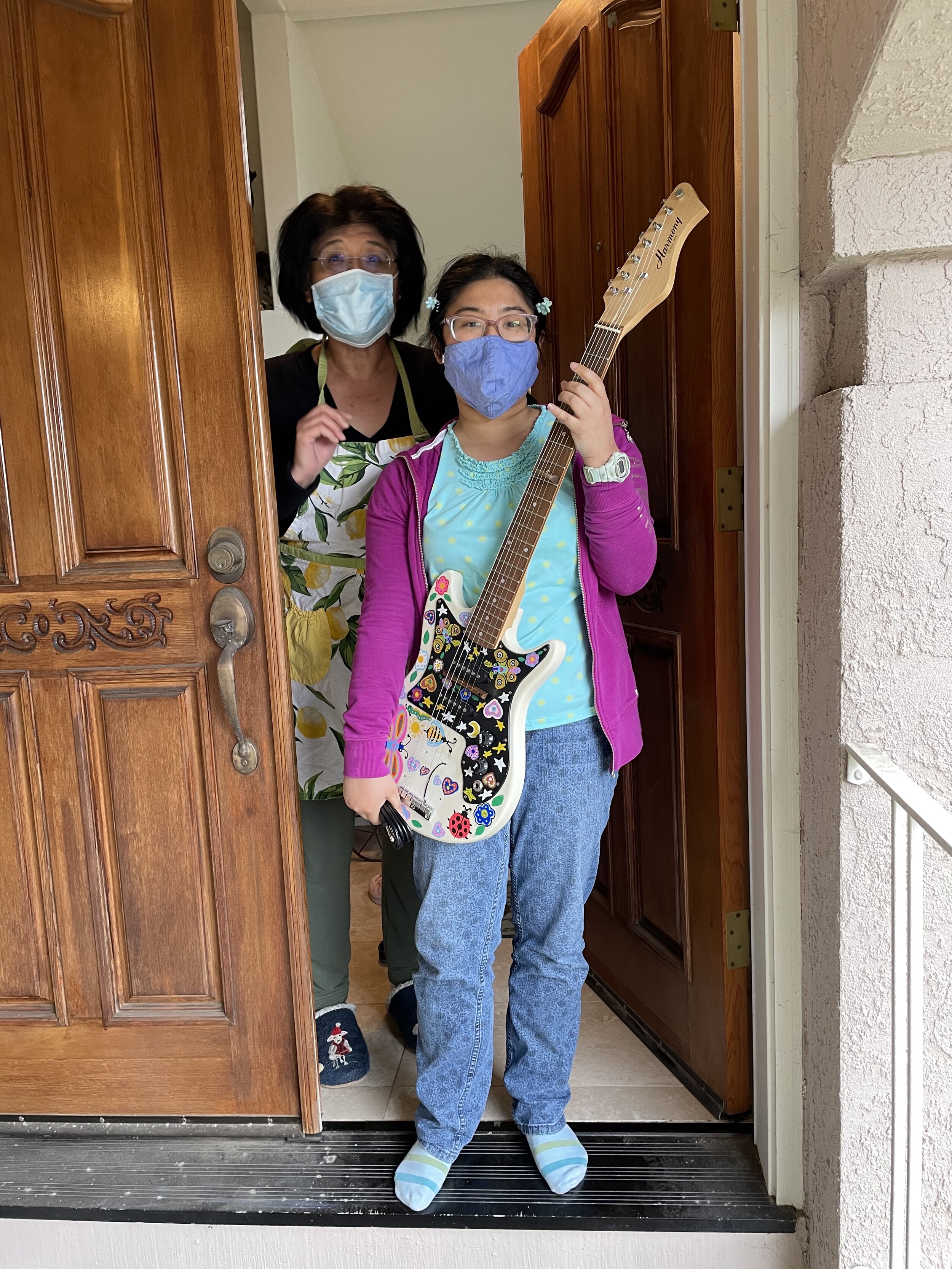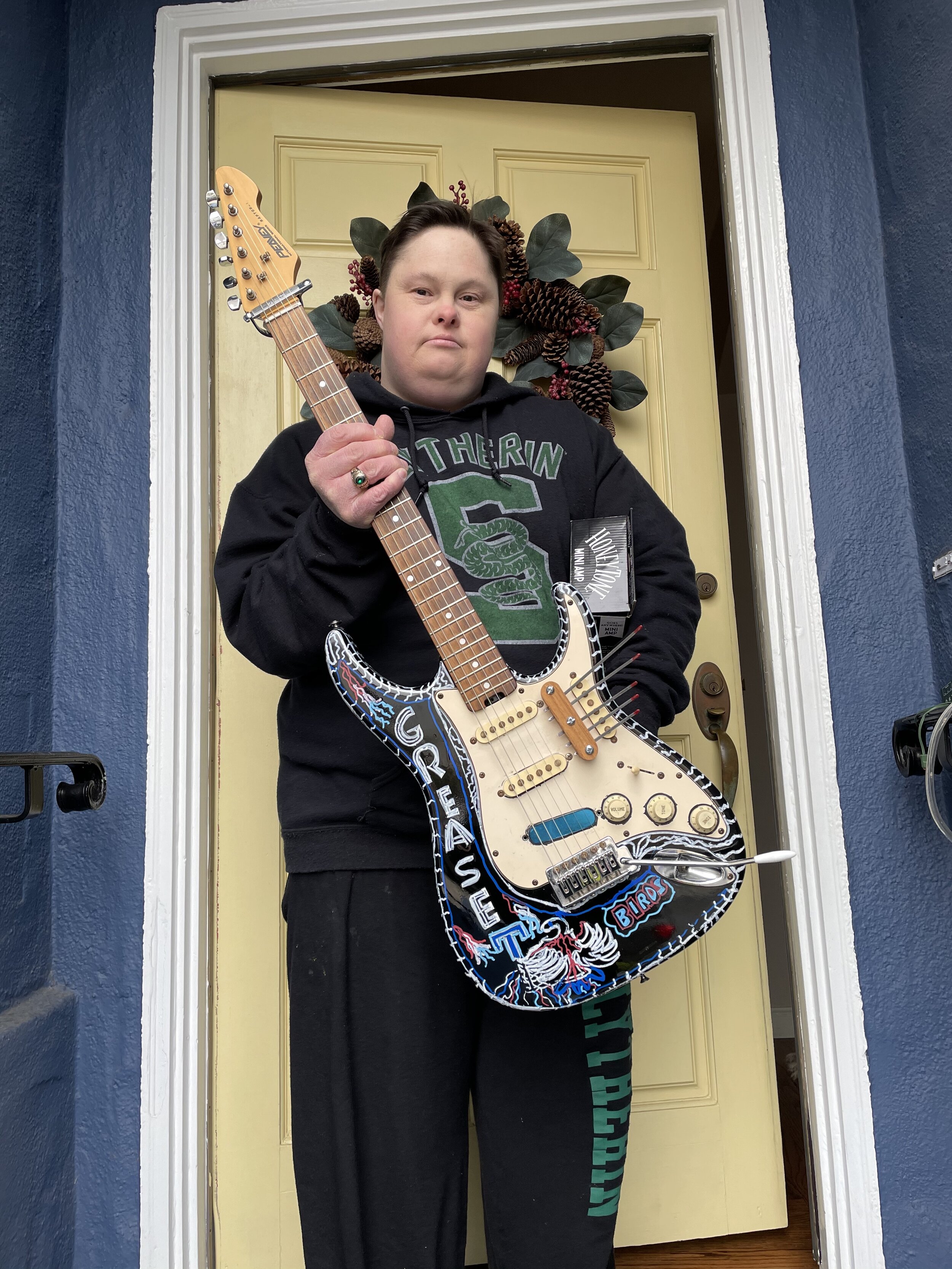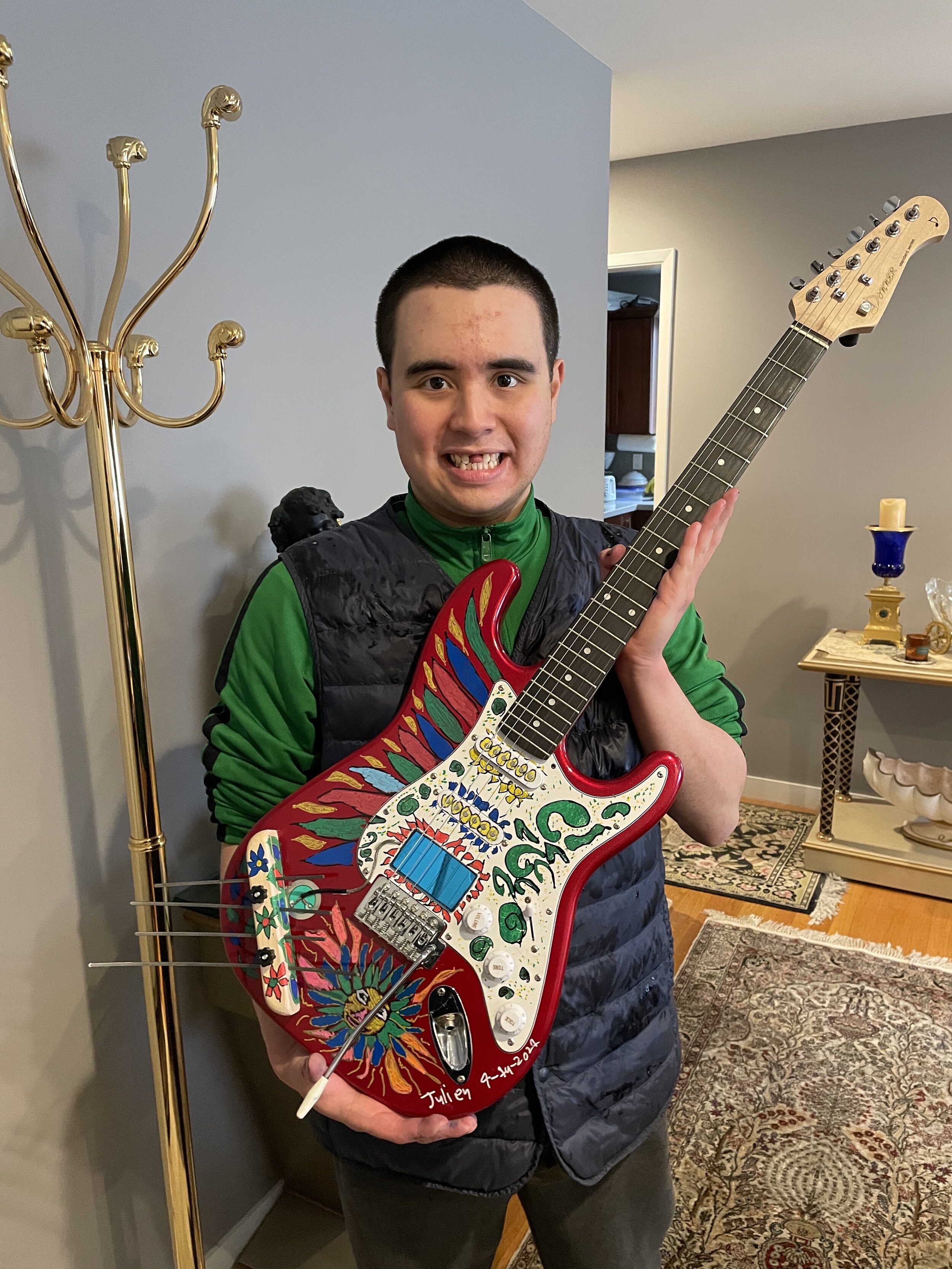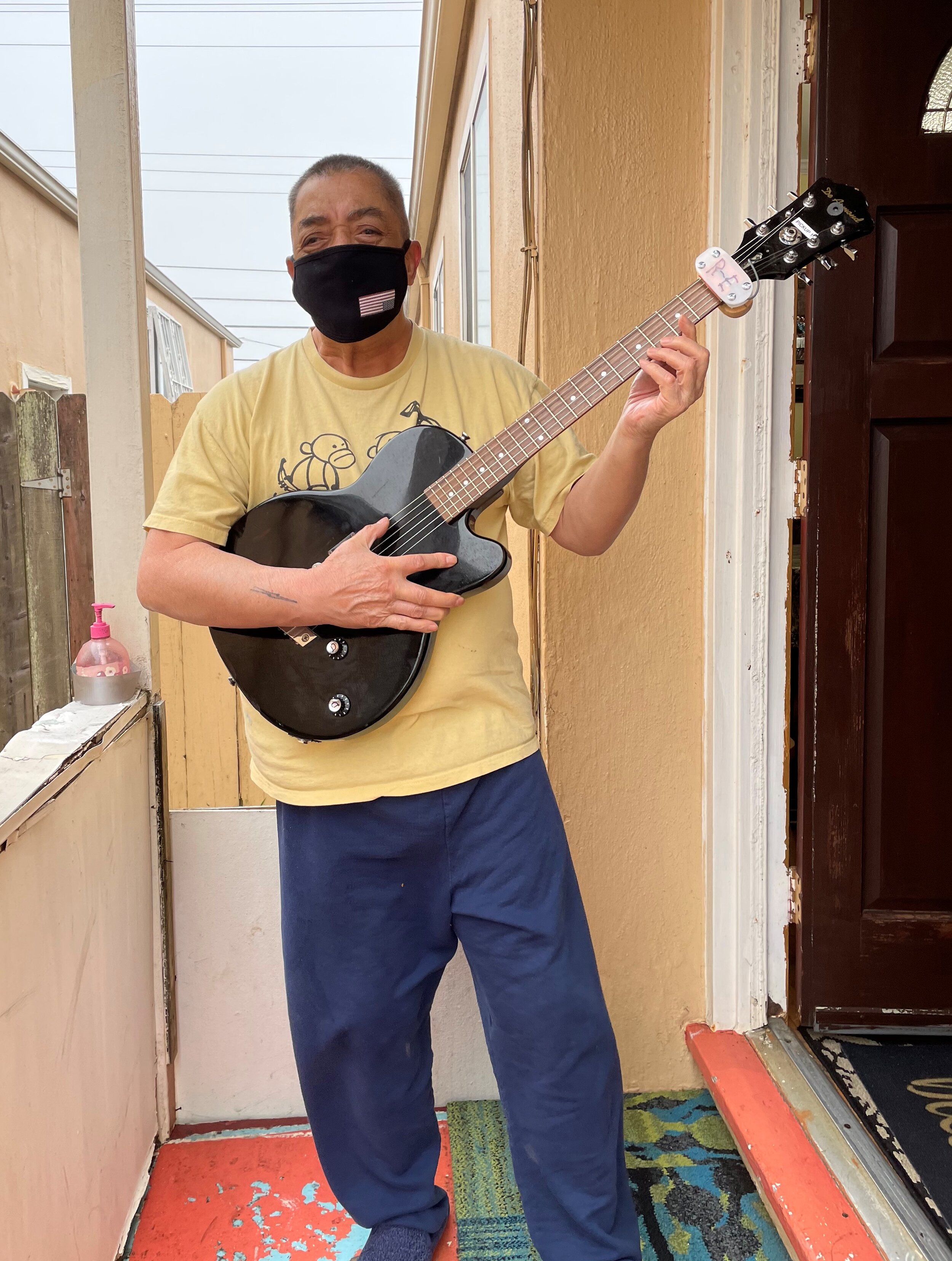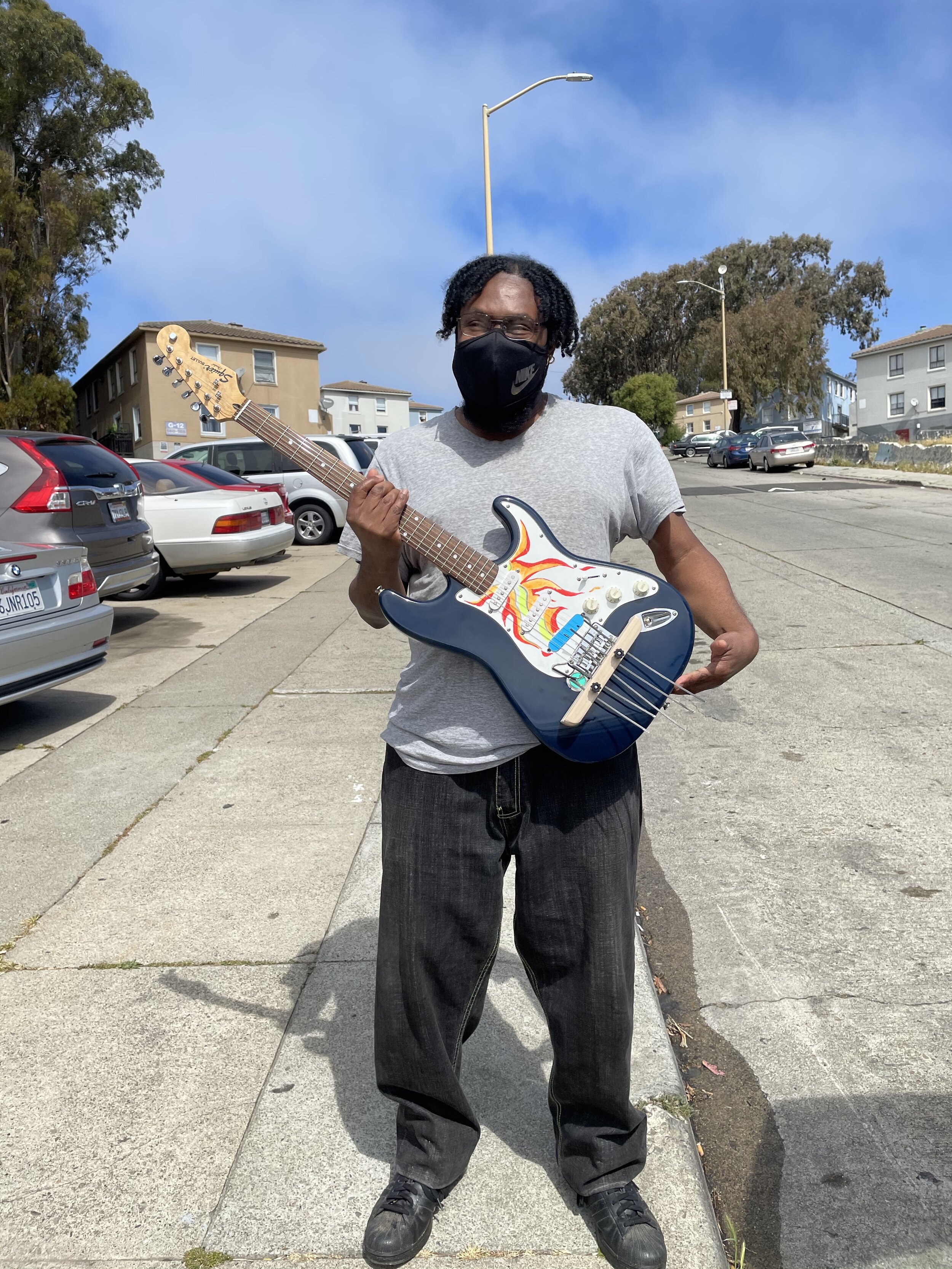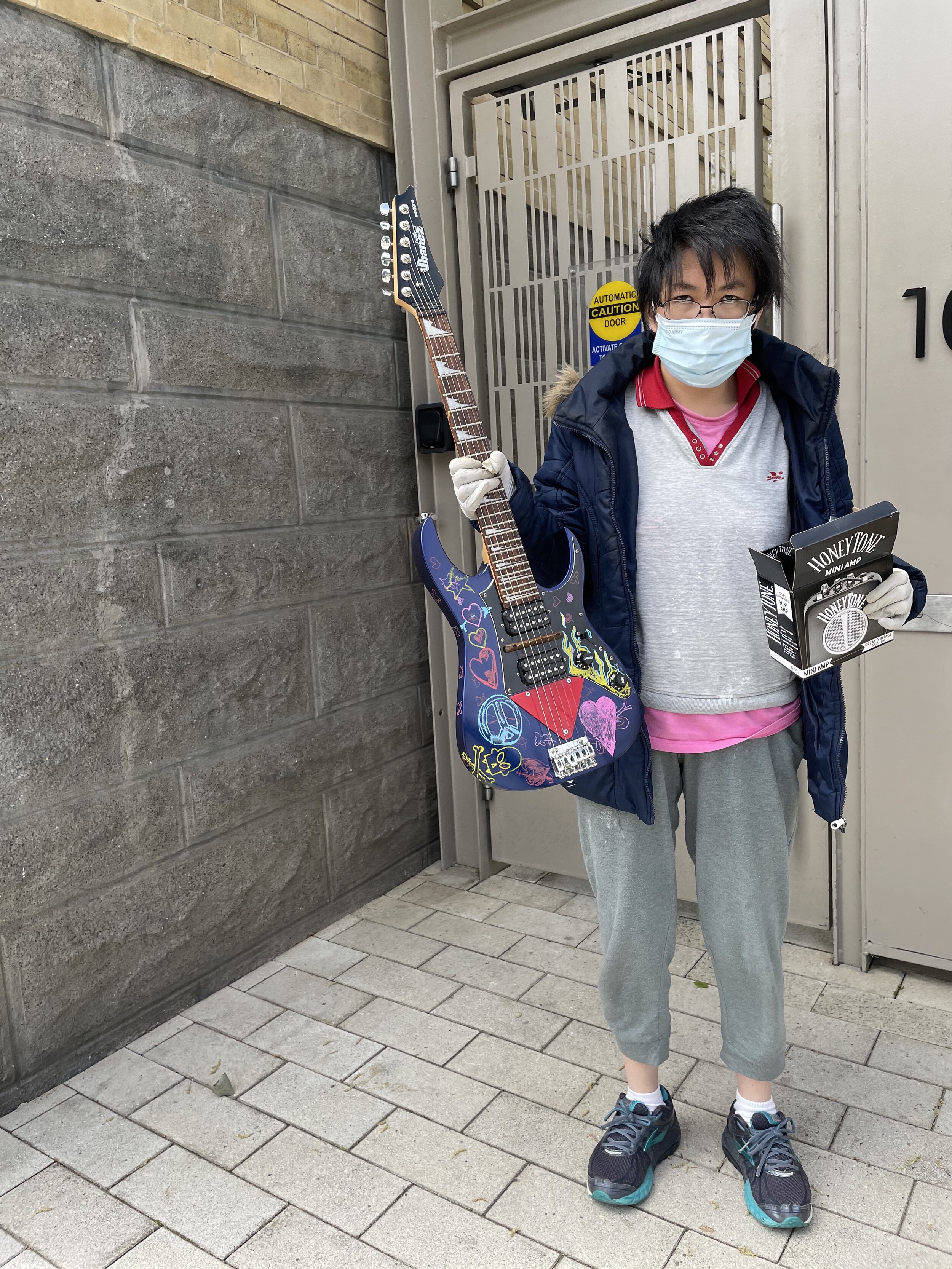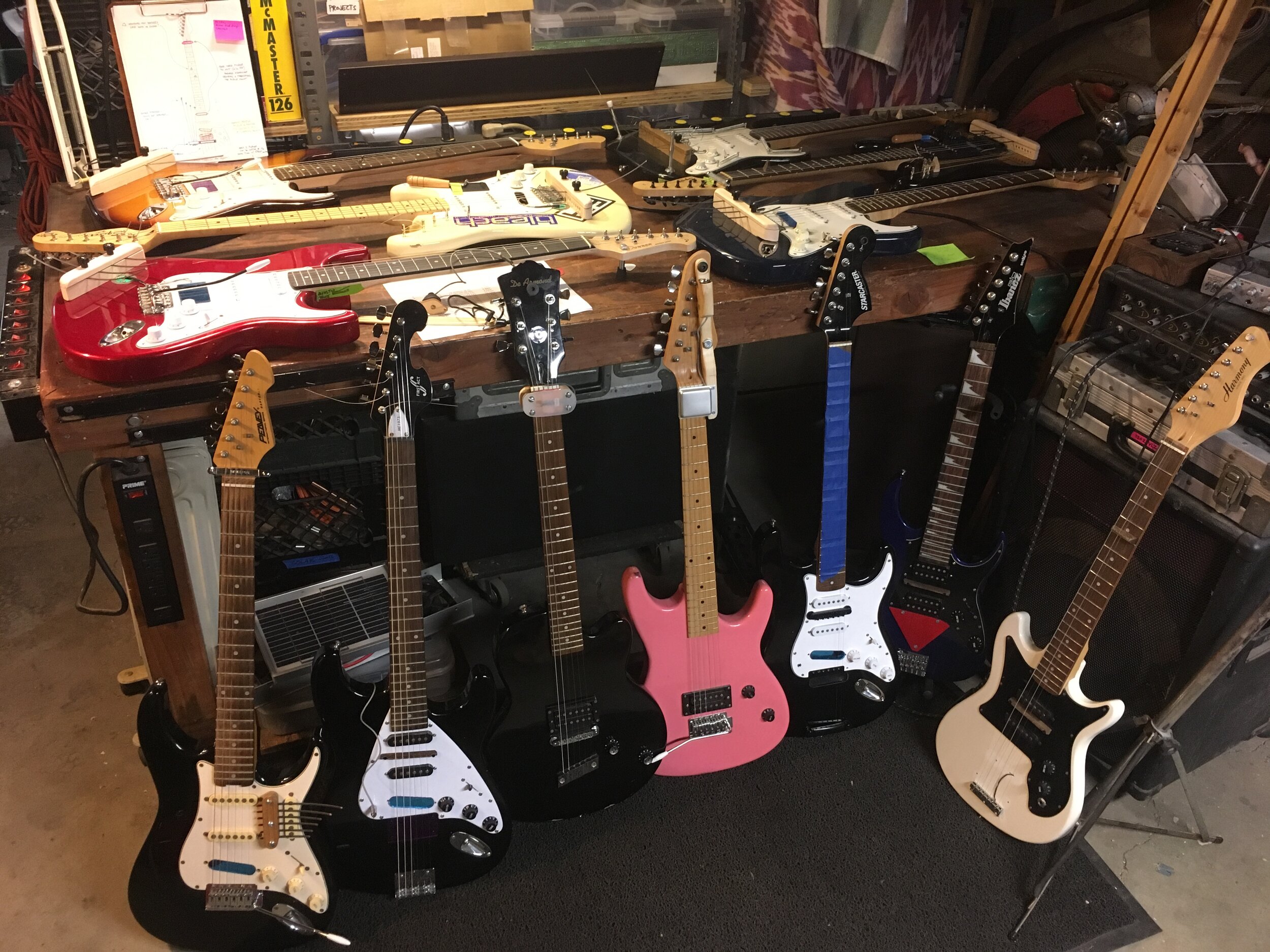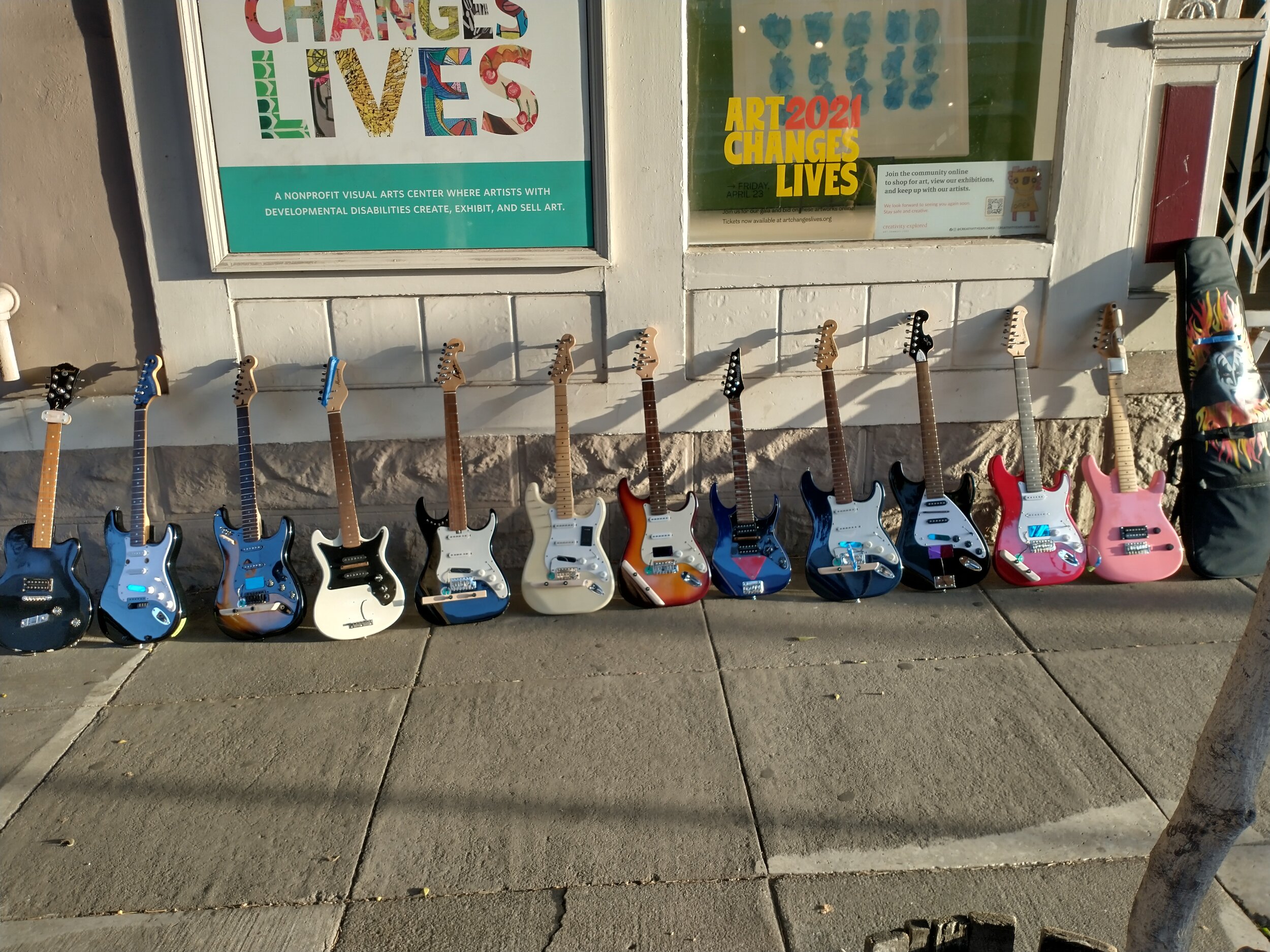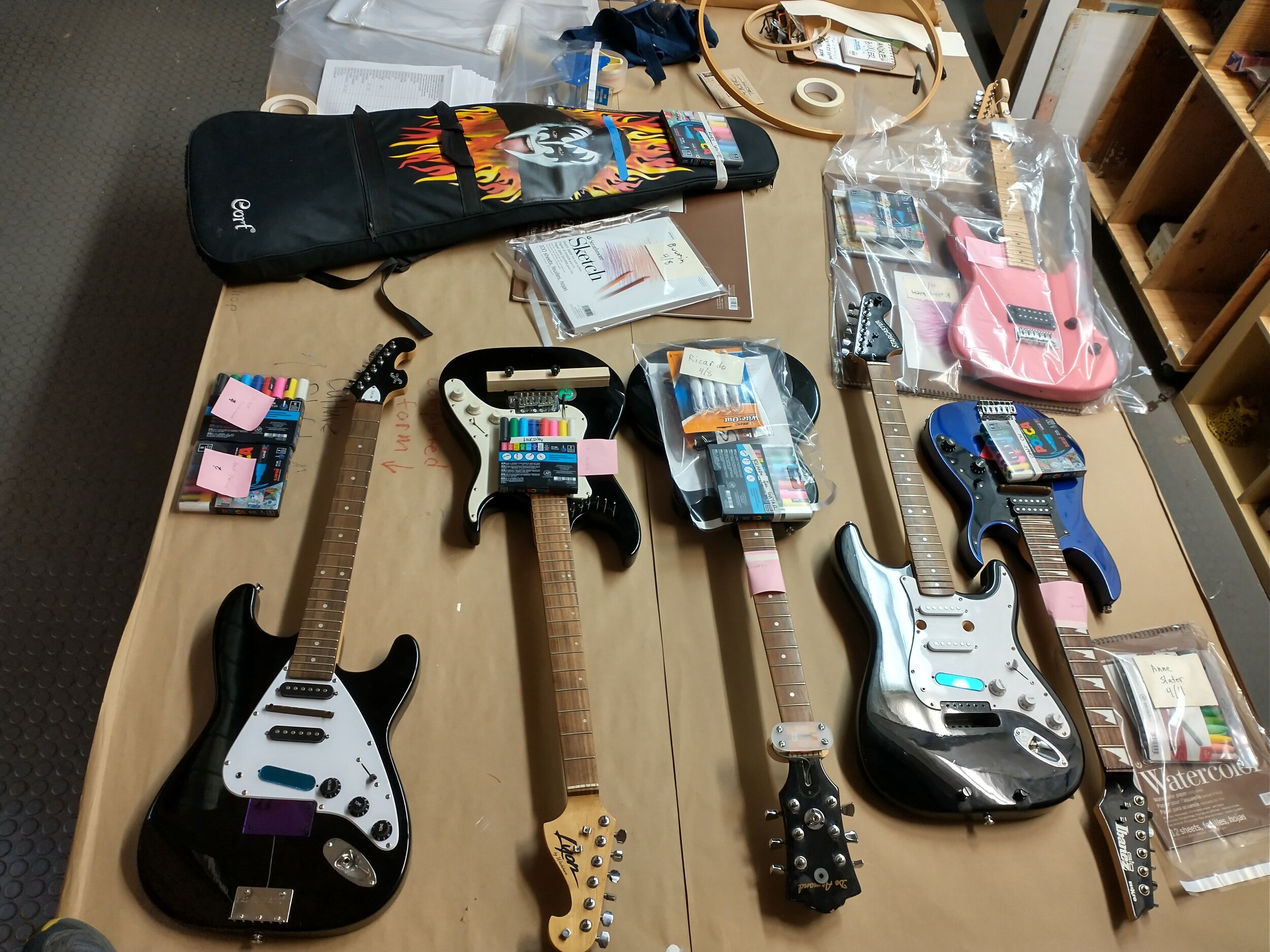Artists experiment with improvised music in Prepared Guitar Ensemble
Prepared Guitar Ensemble, a collaboration founded by San Francisco-based composer Matt Robidoux in 2019 with Creativity Explored, is a space where artists can meet to make sound inclusively with instruments of their own design. Over the course of six weeks, artists met on Zoom twice biweekly and designed and named their modified guitars (winning names included “Grease”, “Goofy’s Ears”, and “Old Town Road”), held discussions about sound and its visual representation, and concluded with an improvisational music session. Teaching artist Ajit Chauhan attended the final jam session and described it as both “cacophonous” and “quite moving.”
With major contributions from instrument builder Sudhu Tewari, 13 artists received their own modified guitars to keep and further customize by drawing on them. For many of the artists, this was the first time they have played an instrument. “I think it’s something really different than from what [the artists are] used to doing,” Robidoux notes, explaining how touched he was during the guitar deliveries by the artists’ pure excitement after learning they were able to keep the guitars.
Dedicated to expanding the improvising community, the social functions of ‘Prepared Guitar Ensemble’ are similarly characteristic of more well-known free improvisation musical structures: to actively engage/reveal dynamic modes of being, reform exclusionary practices, and provide opportunities for individual and collective human flourishing. For Robidoux, improvised music is “about finding an individual voice on the instrument that is very attached to the image and the instrument as a sculpture. In this process of mining the sound, there’s a transcendent unity that can be achieved.”
In his ongoing mission to make music more accessible, Robidoux explains that “the work we do intends to engage members of the group in a manner that does not privilege formal musical training, to exist as a collective improvisation ensemble. In this music, the only constant is the individual’s idiosyncratic approach to the instrument, and a collective attempt at improvisational unity.”
In addition to working with CE artists’ visual art strengths in designing and painting their instruments, formal structures employed in improvisation such as graphic notation are also developed by the artists. Graphic notation has the potential to hold multitudes of interpretations and create a jumping-off point for group cohesion. Encouraging new musicians to explore in this way requires the establishment of an unconstrained, accessible environment.
While the next Prepared Guitar Ensemble sessions may not be until in-person services resume at CE, Robidoux hopes the artists will continue to play on their own and find inspiration through sound. He adds, “I hope that it has promoted different ways of listening because I think that’s one of the greatest sources of inspiration - is observational listening. I hope they can find that in their practice going forward and I hope it opens something up in regards to that - thinking about sound as material.”

